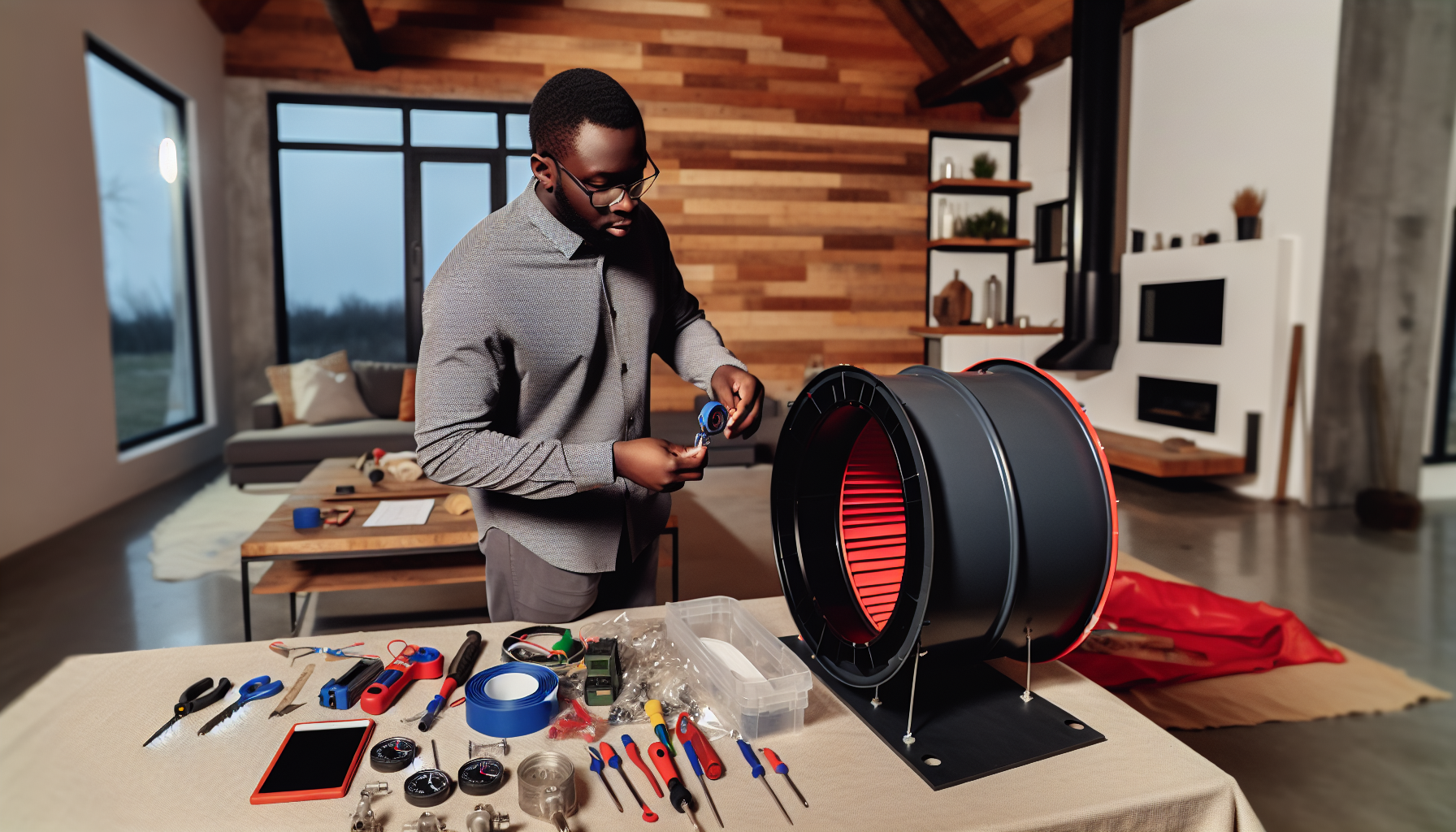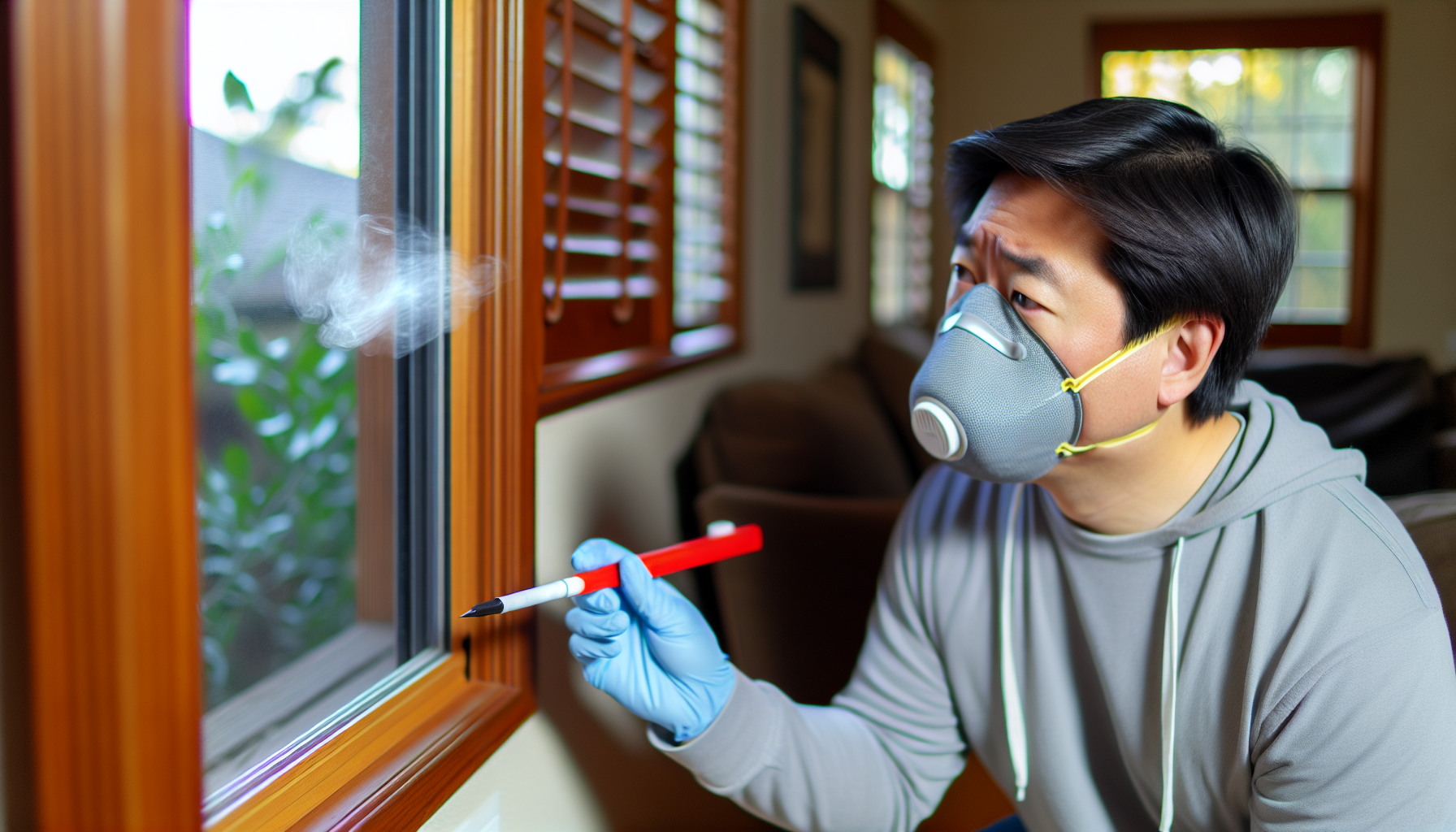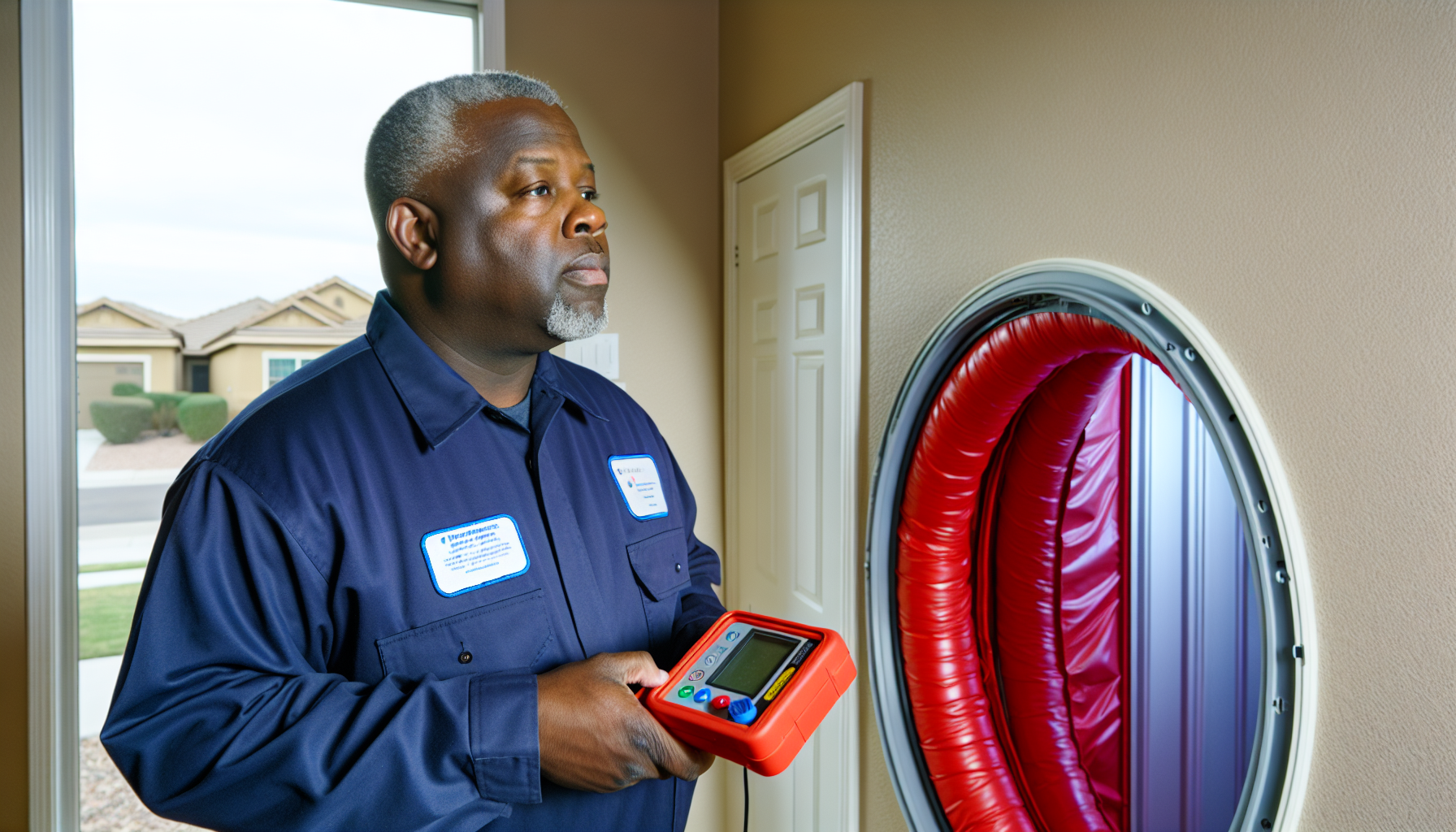Curious about blower door test cost? On average, homeowners pay between $200 to $450. Prices adjust with home size, design details, and regional rates. In the following sections, we’ll navigate the nuances of these cost factors to equip you with the information you need to budget for your blower door test.
Key Takeaways
- The cost of a blower door test varies, from approximately $200 to $450, but can increase based on home size, complexity, and location, with potential costs exceeding $800 for larger or multi-unit homes.
- Blower door tests are essential for enhancing a home’s energy efficiency, air quality, and can lead to significant savings on energy utility bills, with Energy Star citing up to 15% savings on heating and cooling costs.
- Professional blower door tests are meticulous, requiring preparation, calibrated equipment, and expertise to interpret results, ensuring safety and accurate diagnostics for energy-saving improvements; this is often beyond DIY capabilities.
Breaking Down Blower Door Test Cost

A blower door test is a specialized procedure, and its cost varies depending on several factors. These include the size of your home, the complexity of its design, and your location. To provide a general idea, the average blower door test costs range from $200 to $450 for a standard single-family home. However, this can increase significantly for larger homes or those with complex designs.
We will now explore these cost variables in more depth.
Home Size
The size of your home significantly influences the cost of a blower door test. Larger homes require more resources and time for testing, which increases the overall cost. On average, blower door testing costs range between $200 to $450 for a standard one-story or two-story single-family home.
However, for larger homes or those with expansive attic spaces or a small mechanical room, the cost can increase due to the additional time and Top-Rated Blower Door Test Equipment necessary for testing.
Complexity
The complexity of your home’s design also impacts the cost of a blower door test. Complex architectural features and the presence of multiple heating zones can increase both the time required for preparation and the duration of the test itself. For instance, homes with intricate designs or multiple units require more detailed testing, leading to higher costs.
In fact, blower door tests for apartments or multi-family homes can exceed $800 for the building as each unit typically costs between $250 and $350.
Location
Lastly, your home’s location can influence the cost of a blower door test. This is primarily due to variations in regional labor rates and the level of demand for such services. For example, in some regions, the cost for a blower door test may be higher or lower than the national average, reflecting the local market conditions.
It’s always worth checking with local providers to get a more accurate estimate.
Benefits of Investing in a Blower Door Test

Investing in a blower door test offers significant benefits, including:
- Identifying issues with home airtightness
- Improving energy efficiency
- Enhancing air quality
- Potential savings on utility bills.
We will now examine these benefits more thoroughly.
Energy Efficiency
One of the primary benefits of a blower door test is its role in enhancing energy efficiency. The test offers the following benefits:
- Identifies air leaks in a home’s envelope
- Sealing these leaks prevents the loss of heated or cooled air, contributing to heightened energy efficiency
- By determining the airtightness of a home, the test can help reduce excess energy consumption due to air leakage.
Moreover, the data obtained from the test can inform the sizing of HVAC equipment, optimizing energy usage, and cost.
Improved Air Quality

A well-sealed home, as evidenced by a successful blower door test, can lead to improved indoor air quality. The test is instrumental in identifying air leaks, which, when sealed with closed cell spray foam, helps control the entry of outdoor contaminants, pests, and odors.
This contributes to cleaner indoor air, leading to a healthier living environment.
Potential Savings
Addressing air leakage issues revealed by blower door tests can result in lower utility bills and long-term savings. Air sealing a home can reduce the energy used by heating and cooling equipment, leading to significant savings.
In fact, Energy Star reports that energy savings of up to 15% on heating and cooling costs can be achieved through implementing an effective air sealing strategy, such as home air sealing.
The Blower Door Testing Process

Blower door testing is more than just turning on a fan and watching for air movement. It’s a meticulous process that involves preparation, the actual testing, and result analysis. Each of these steps is crucial to accurately identify areas compromising a home’s energy performance, especially during the first blower door test.
Preparation
Before starting the blower door test, thorough preparation is pivotal for reliable outcomes. Here are some steps to follow:
- Close and lock all exterior doors and windows to ensure a tight seal.
- Seal non-motorized dampers leading outside.
- Close dampers for solid-fuel burning appliances.
By following these steps, you can ensure accurate results from the blower door test.
All fans, including dryers, kitchen, bathroom, and ventilation systems, as well as heating and cooling equipment fans, should be turned off prior to the test.
Testing
In the midst of the blower door test, the home undergoes depressurization to enable comparisons and mimic natural leakage scenarios. Prior to the test, it’s important to extinguish all fires, set combustion appliances to ‘pilot,’ and seal plumbing vents to prevent safety issues and airflow interference.
The test employs calibrated fans, precise manometers, and diagnostic tools like infrared cameras, ensuring accurate detection and measurement of air leakage, as well as identifying any air leaking issues.
Analyzing Results
Post-test analysis entails computing the primary metric, the CFM50, showing the volume of air traversing the fan each minute at a test pressure of 50 pascals. This provides a basis for calculating air changes per hour (ACH50) and leakage rate in CFM50 per square foot.
A professional energy assessor can provide detailed diagnostic information identifying specific areas of air leakage, which is essential for targeting energy-saving improvements.
Choosing a Qualified Blower Door Tester

Considering the intricacies of the blower door test and the necessity of precise results, it’s imperative to engage a certified professional. Whether it’s a BPI-certified technician or a HERS Rater, these professionals have the necessary skills and knowledge to perform the test accurately and provide reliable recommendations.
BPI Certification
BPI Certification ensures that a professional conducting blower door tests has the necessary skills to perform accurate diagnostics and offer reliable energy-saving recommendations. To obtain the certification, candidates must take a hands-on field exam, achieving a passing score of 85% or higher.
It’s an assurance that the professional is well-trained and knowledgeable.
HERS Rater
Certified HERS Raters conduct blower door tests as part of their energy evaluation processes. They utilize specialized equipment, such as a variable-speed fan and pressure gauges, to measure and calculate the difference in pressure and airflow within a home.
In the planning stages of a new home, HERS Raters offer valuable insights to navigate building departments and energy codes effectively. Essential Guide to Blower Door Test for New Construction.
Blower Door Test Compliance and Building Codes
Blower door tests are not just beneficial; they’re often required for code compliance, energy audits, and achieving high-performance certifications. Both the International Energy Conservation Code (IECC) and local building codes have specific requirements for blower door tests.
IECC Requirements
The International Energy Conservation Code (IECC) mandates blower door tests for new residential builds and remodels to ensure proper air barrier installation and the presence of a required combustion air vent. To comply with the IECC, new homes must demonstrate air tightness at or below 3 to 5 air changes per hour at a 50 pascal pressure difference (ACH50), varying by geographic location.
Local Building Codes
In addition to the IECC requirements, local building codes may also require blower door testing. These requirements can vary widely within the same state, so it’s important to verify building codes with local municipalities.
For instance, in states like Massachusetts and Rhode Island, most localities require blower door testing as a part of their building codes.
DIY vs. Professional Blower Door Testing
While it might be tempting to perform a blower door test by yourself, it’s not recommended due to the complexity of the process and the need for specialized equipment and knowledge.
Let’s examine the difficulties of DIY testing and the advantages of engaging a professional.
DIY Challenges
Performing a blower door test yourself can be challenging and could lead to inaccurate results. Maintaining the interior air pressure at the standard 50 pascals, which is required for a proper test, is challenging in DIY conditions.
Furthermore, interpreting the data from blower door tests is complex and can be easily misleading without a thorough understanding of how air characteristics, such as density and viscosity, impact the measurements.
Benefits of Hiring a Pro
Hiring a professional for blower door testing ensures accurate results, safety, and expert recommendations for improving home airtightness. Certified professionals conduct thorough inspections to pinpoint leaks, interpret blower door test data accurately, and provide meaningful recommendations for air tightness improvements.
They also prioritize safety, with protocols in place to reduce the risk of accidents, appliance backdraft, and manage potential fire hazards, especially when using a sealed combustion water heater.
Summary
In conclusion, a blower door test is a valuable tool for assessing a home’s energy efficiency, helping homeowners identify air leaks, improve indoor air quality, and potentially save on energy costs. While the cost of a blower door test can vary based on factors such as home size, complexity, and location, the benefits often outweigh the initial investment. It’s essential to hire a certified professional to ensure accurate results and reliable recommendations. Compliance with both the International Energy Conservation Code and local building codes may require blower door tests, underscoring their importance in residential construction.
Frequently Asked Questions
How much is blower door test?
A blower door test typically costs around $300-$400 for an average-sized house if you hire a professional for the service. Some companies also offer the option to perform the test yourself.
Is a blower door test worth it?
Yes, a blower door test is essential for ensuring better duct sealing, enclosure sealing, and improved indoor air quality in various types of construction projects.
How long does a blower door test take?
A blower door test, when combined with a whole home energy audit, usually takes about 1-2 hours, with the blower door test itself running for about half an hour. Therefore, the entire process should be completed within this time frame.
How hard is it to pass a blower door test?
Passing a blower door test can be challenging, as an estimated 50% of newly constructed homes fail this test due to a lack of understanding in creating a continuous air barrier system. Good luck with the test!
What is a blower door test?
A blower door test is a diagnostic tool used to measure air leakage in a building, uncovering energy-saving opportunities and health risks.
